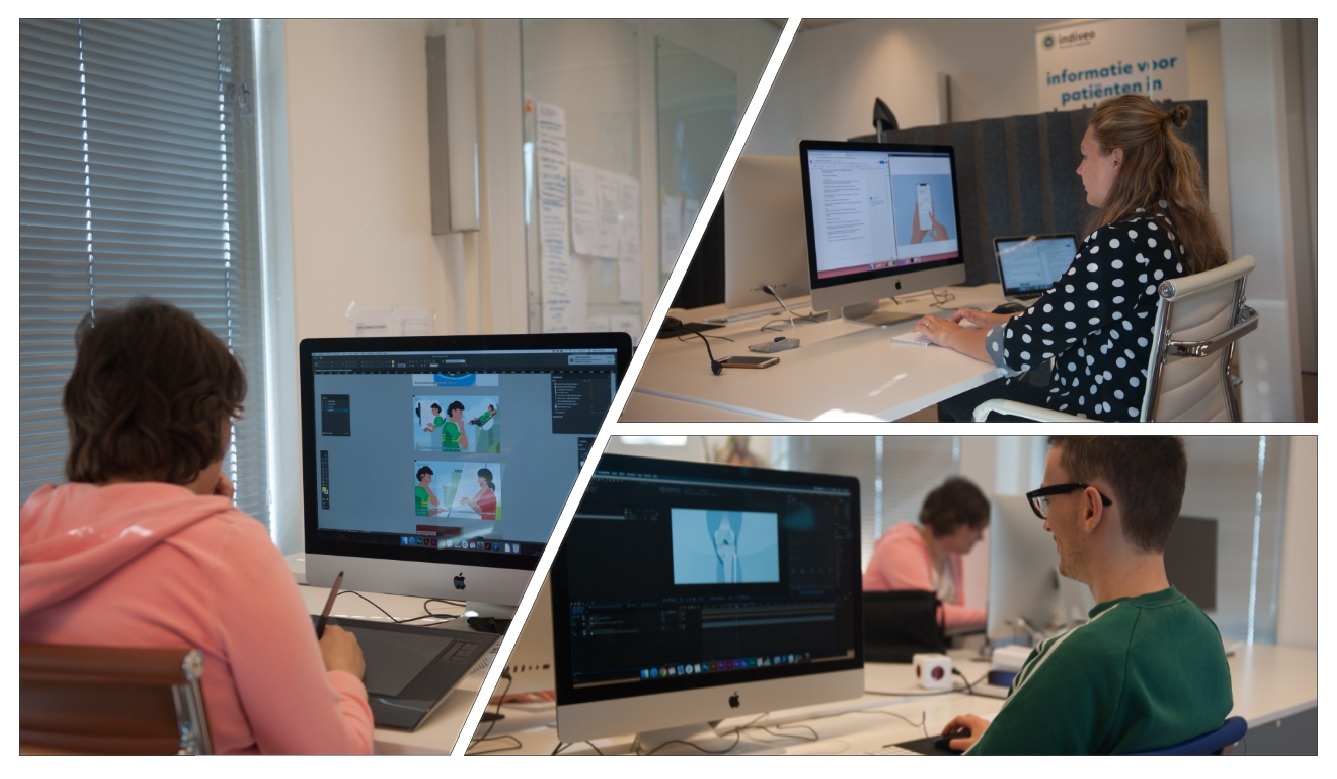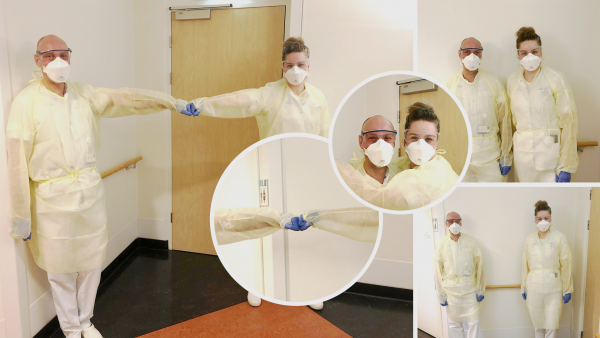July 16, 2020
A look behind the scenes: Literally and figuratively

'Making such a Divi how does it actually work?'
Indiveo specializes in creating understandable patient information in image and sound about diagnostics, disease states and treatments. We call these visual stories and animations with additional information Divis.
"Why do you create information in image and sound?" and "How do you do it?" and "Who is involved?". We give a literal and figurative look behind the scenes by answering these frequently asked questions.
Why do we use the combination of text, image and sound?
'As much as one-third of our brain capacity is taken up with processing visual information. This is an extraordinary amount when you realize that our brain has to perform literally hundreds of tasks, such as planning, recognizing the emotions of others, controlling parts of the body, and so on. So says "brain expert" Mark Tigchelaar in the NRC article "Images are the language of our memory.
Much research has been done on how our brains best process and remember information. For patients, it's important that information about their own health situation is understandable. Because if you understand what is going on, what you can do yourself and why you should do it, you are much more likely to actually do it. It makes for better understanding and therefore different behavior and better compliance. In addition, patients experience less tension and stress when there is clarity about their health situation. This has a positive effect on their own health and quality of life. With 2.5 million low-literate people and the knowledge that we can understand and remember information much better through images, it is only logical that information for patients is explained precisely through images.
What quality requirements must the visual stories meet?
Optimal use of information in images and animations requires attention and expertise. As a team, we dedicate ourselves daily to creating a product that provides patients with optimal information.
'Detailed, simple, complete, truthful, focus on the subject, understandable, clear structure in content, form and color, need to know versus nice to know.'
Just a few concepts that come up when producing a Divi. Some of these concepts may seem incompatible. Combining these seeming contradictions is one of the features that gives the product its strength and is a challenge for us. All the parts together must reinforce each other in conveying the message. 'The images must create clarity and ensure that attention goes to the right subject'.
Who make the Divi?
Creating one Divi requires a production coordinator, a communications expert, a medical illustrator, an animator, a voice-over and a content expert.
Production coordinator and communications expert: Laura
As production coordinator and communications expert, Laura is responsible both organizationally and substantively for developing the Divis. In addition to planning the production of the Divis, she regularly sits down with various healthcare providers. It is important to hear from the healthcare providers what information is involved and how the patient receives this information. The patient's perception plays an important role. For example, what is perceived as very exciting and what part should receive extra attention in the Divi? The information gathered is then set up so that the illustrator and animator can create the images and animation and design the Divi.
'Together with the illustrator and animator, I look at how we can best shape the Divis and the information in them. The focus is on making it understandable and clear, so that it is clear to all patients,' Laura said.
Medical illustrator: Eva
Our illustrator is a specialized illustrator. Eva is trained as a medical illustrator and therefore has knowledge of anatomy and expertise in representing this, often complex, subject matter in an understandable way. The medically simplified but correct images are drawn and colored with a digital pen. Use of color and considerations in "need to know versus nice to know" are important here. The images must be realistic but not too complicated. These individual images form the basis for the visual stories.
'As a medical illustrator, my job is not only to draw the images anatomically correct but also to render them in an understandable way. Medical representation with the right amount of information needed to convey the message clearly.' says Eva.
Voice-over: Roos
Roos de Kok is our (external) professional voice-over. She voices all the texts for the animations. Roos was chosen with care. Her voice is clear and friendly. Texts are spoken calmly, clearly and with the right intonation.
Animator: Edwin
As an animator, Edwin ensures that the individual images become a moving whole. Color, shape and the right balance between "action and rest" are important here. This also includes the targeted placement of spoken text under the images. Text and image must support and reinforce each other.
'My job as an animator is to transform the illustrations into understandable, moving images. The goal is to inform the patient in a calm and clear way, so that everyone understands our animations," Edwin said.
The result: a total package of patient information
All the components together form the result: the Divi. In all steps of the process, understandable information for the patient is central. Based on the content of the Divi, the most appropriate emphasis is chosen. When explaining a diagnostic examination, different emphases are important than when explaining a clinical picture or treatment. As a result, some Divi's place more emphasis on imagery, while other Divi's have more attention to detail. Still other Divis, on the other hand, require more attention to the patient's experience. Coordination and collaboration of the Indiveo team with the health care provider produces the Divi that best suits the patient's needs.



